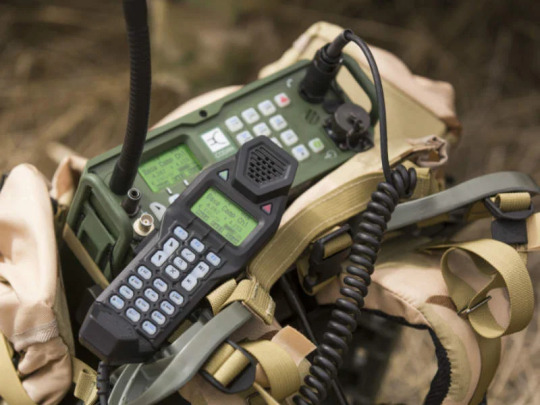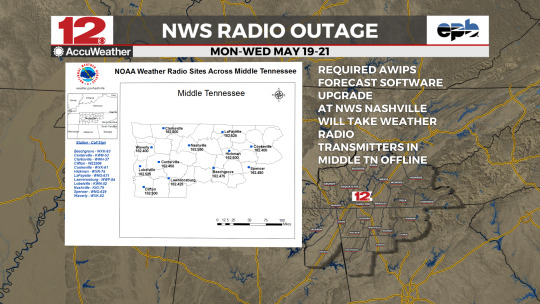#Software Radio
Explore tagged Tumblr posts
Text
Software Defined Radio Market Opportunities Advancing Automotive Communication Systems
The software-defined radio (SDR) market presents numerous opportunities across various industries, from telecommunications and defense to consumer electronics and automotive sectors. SDR allows for the reconfiguration of radio systems through software, providing flexibility, cost efficiency, and scalability. The increasing demand for communication systems that can adapt to evolving needs has opened new avenues for growth in the SDR market. This article explores the key opportunities in the software-defined radio market.

Software Defined Radio Market Opportunities: Expanding 5G Networks
With the rollout of 5G networks, the demand for SDR technology is higher than ever. SDR's ability to support multiple communication standards, including 5G, makes it an ideal solution for future-proofing wireless networks. The growth of 5G infrastructure offers significant opportunities for SDR integration, enabling faster, more efficient data transfer with lower latency.
Software Defined Radio Market Opportunities: Growth in Defense and Military Applications
The defense and military sectors have been early adopters of SDR technology due to its flexibility and ability to support secure, real-time communication. With the rising need for adaptive, secure communication systems in military operations, there is an increasing opportunity for SDR to transform how armed forces operate. SDRs offer secure communication, interoperability across different frequencies, and resistance to jamming and other interference, making them critical in modern warfare.
Software Defined Radio Market Opportunities: Internet of Things (IoT) Expansion
The growth of IoT devices is another significant opportunity for the SDR market. As the number of connected devices increases, SDRs can provide a flexible and scalable solution for managing communication between IoT devices across various frequency bands. SDR technology allows for seamless integration and communication in IoT ecosystems, supporting various protocols and frequency ranges.
Software Defined Radio Market Opportunities: Advancements in Automotive Communication Systems
Automotive manufacturers are increasingly incorporating SDR technology to meet the growing need for advanced communication systems in vehicles. With the rise of connected cars, autonomous vehicles, and vehicle-to-everything (V2X) communication, SDR can offer adaptable solutions to ensure secure and efficient communication in rapidly evolving automotive environments. SDRs enable vehicles to communicate across different radio frequencies, improving traffic safety and efficiency.
Software Defined Radio Market Opportunities: Integration with Artificial Intelligence (AI)
The integration of Artificial Intelligence (AI) with SDR presents exciting opportunities in network management, optimization, and decision-making. AI can help SDR systems optimize spectrum usage, predict network failures, and automatically adjust communication protocols. This ability to enhance efficiency and adapt to changing network conditions provides a compelling opportunity for SDR in a variety of industries.
Software Defined Radio Market Opportunities: Advancements in Cognitive Radio Technology
Cognitive radio technology, which allows SDR systems to intelligently adapt to changing radio environments, is another significant opportunity. Cognitive radios can dynamically switch frequencies and adjust transmission power based on real-time spectrum availability. This technology is particularly beneficial in crowded and congested radio frequency environments, such as urban areas or defense communications, offering opportunities to improve spectrum efficiency and network performance.
Software Defined Radio Market Opportunities: Telecom Network Evolution
Telecommunications service providers are increasingly adopting SDRs to modernize their infrastructure and support evolving network standards. With the transition to 5G, the adoption of SDR technology enables telecom providers to improve the scalability, reliability, and efficiency of their networks. SDR offers telecom companies the opportunity to streamline network management, improve service delivery, and reduce operational costs.
Software Defined Radio Market Opportunities: Cost Reduction and Scalability
SDR systems offer the opportunity for significant cost savings in comparison to traditional hardware-based radio systems. By replacing costly, specialized hardware with flexible, software-based systems, organizations can reduce expenses and improve scalability. This scalability is particularly attractive for businesses that need to expand their radio systems as they grow, offering a cost-effective solution for scaling operations.
Software Defined Radio Market Opportunities: Remote and Rural Communication Networks
In remote and rural areas, where traditional communication infrastructure may be lacking or expensive to implement, SDR presents an opportunity to improve connectivity. SDR technology can be deployed to create cost-effective, flexible communication networks that can operate across various frequencies and protocols, ensuring that even the most isolated regions have access to reliable communication services.
Software Defined Radio Market Opportunities: Collaborative Open-Source Development
The open-source nature of SDR development has opened the door to more collaborative, community-driven innovation. By adopting open-source platforms, developers from around the world can contribute to the advancement of SDR technology, creating a wide range of solutions for various industries. This collaborative approach fosters innovation and accelerates the adoption of SDR technology in new markets.
Conclusion
The software-defined radio market presents substantial opportunities across multiple industries, driven by its flexibility, scalability, and ability to adapt to evolving communication needs. From 5G networks and defense applications to automotive, IoT, and telecommunications, SDR is at the forefront of innovation. As organizations seek more cost-effective, secure, and adaptable communication systems, the SDR market is poised for continued growth and transformation.
#Software Defined Radio Market#Software Defined Radio Market trends#Software Defined Radio#Software radio#Software radio services
0 notes
Text

"My dear, if I wanted to hurt anyone here, I would have done so already."
#hazbin hotel fanart#hazbin hotel alastor#hazbin hotel#alastor#the radio demon#hazbinhotel#alastor the radio demon#gif#my art#blaseart#i dont know how to animate anything#my partner had to fight procreate dreams for this#dreams is a BAD animation software#the struggles
224 notes
·
View notes
Text
I know this take has been done a million times, but like…computing and electronics are really, truly, unquestionably, real-life magic.
Electricity itself is an energy field that we manipulate to suit our needs, provided by universal forces that until relatively recently were far beyond our understanding. In many ways it still is.
The fact that this universal force can be translated into heat or motion, and that we've found ways to manipulate these things, is already astonishing. But it gets more arcane.
LEDs work by creating a differential in electron energy levels between—checks notes—ah, yes, SUPER SPECIFIC CRYSTALS. Different types of crystals put off different wavelengths and amounts of light. Hell, blue LEDs weren't even commercially viable until the 90's because of how specific and finicky the methods and materials required were to use. So to summarize: LEDs are a contained Light spell that works by running this universal energy through crystals in a specific way.
Then we get to computers. which are miraculous for a number of reasons. But I'd like to draw your attention specifically to what the silicon die of a microprocessor looks like:


Are you seeing what I'm seeing? Let me share some things I feel are kinda similar looking:


We're putting magic inscriptions in stone to provide very specific channels for this world energy to flow through. We then communicate into these stones using arcane "programming" languages as a means of making them think, communicate, and store information for us.
We have robots, automatons, using this energy as a means of rudimentarily understanding the world and interacting with it. We're moving earth and creating automatons, having them perform everything from manufacturing (often of other magic items) to warfare.
And we've found ways to manipulate this "electrical" energy field to transmit power through the "photonic" field. I already mentioned LEDs, but now I'm talking radio waves, long-distance communication warping and generating invisible light to send messages to each other. This is just straight-up telepathy, only using magic items instead of our brains.
And lasers. Fucking lasers. We know how to harness these same two energies to create directed energy beams powerful enough to slice through materials without so much as touching them.
We're using crystals, magic inscriptions, and languages only understood by a select few, all interfacing with a universal field of energy that we harness through alchemical means.
Electricity is magic. Computation is wizardry. Come delve into the arcane with me.
#computer programming#computer science#computing#technology#tech#hardware#software#ham radio#robots#robotics#microcontrollers
35 notes
·
View notes
Text

Skywave Linux v5.3 is available for download! It is a self-contained live Linux operating for shortwave listening. Connect easily and stream from internet based SDR sites. The picture is from a nice night enjoying CBC Radio 1, picked up on a receiver in Newfoundland, Canada.
Get the iso image, burn it to a USB stick, boot the system and have fun. Shut down and unplug the USB, your PC never knew it was running a live Linux system…
#skywave linux#linux software defined radio#Python SDR apps#Debian Sid with DWM#internet sdrs#KiwiSDR#WebSDR
8 notes
·
View notes
Text

"@NWSNashville will be conducting a major AWIPS Upgrade next week. During this upgrade, all NOAA Weather Radio Transmitters in Middle Tennessee serviced by NWS Nashville will be down. This is unavoidable no matter the weather, so please encourage other means to receive reliable weather information Monday (May 19th) -Wednesday (May 21st) next week!"
#NWS Nashville#NWS Weather Radio#Weather Radio Outage#National Weather Service#AWIPS software upgrade
2 notes
·
View notes
Text
kotarou maghni ai thank GOD i literally sighed an audible sigh of relief
#i was so scared. one fear. whether or not the. unsavory figure is still involved or not with ace? i uh. still will never use it regardless#because i dont do subscription only software orz#BUT MAGHNI..... HELL YES#im really intrigued by them. we havent heard a WHOLE lot but i enjoy the engine noise they have its like#somewhere between cevio's 2.0 vocoder and like some world based resamplers#and the systems look like they jack all the things i enjoy about SV and OU (voice color systems - multilingual - etc) which is what i want#all vocal synth editors to do LOL jk jk.... but not really joking at all#but im already excited to maghni this is great. i really fell for audine#she has this really sweet enunciation i really like. very beautiful in the very sugary rnb pop tune answer book#also maybe big al is gonna be there someday. hi big al <3#this rules man i was hoping voisona/cevio or MAAAYBE diffsinger because i had written off sv and maghni as options#(im not sure why. i think it was just because it was a bit of radio silence for a bit there that i wasnt sure what was going on with it)#but im glad it was maghni. im so ready. im so so ready#now i dont. totally know whats going on with them. ive always struggled following their press stuff#which im realizing now is just because the colours they chose on their website is really hard to read for me LOL#so i havent. the slightest idea of when this thang is even gonna be launched or if anyone knows a general ballpark#but i am excited nonetheless <3
3 notes
·
View notes
Text

somebody should paint this image im just sayin
#rtvs#wayneradiotv#wayne#wrtv#uhhhh#radio tv solutions#faxmas 2#remember faxmas 2? my favorite all time ever? yeah...#fun fact the faxmas 2 highlights video i made is one of my least favorite videos because the entire editing process was actually cursed.#the vod kept breaking my editing software true story
15 notes
·
View notes
Note
Ok, I love this podcast, like, very much. But one request, can each episode have a "clearer audio" version like you did with the first video?? It's just a bit easier for me to understand without having to read the transcript while I'm listening :] (Sorry if this sounds rude or anything ajaja)
no this isn't rude at all don't be silly!!
essentially what happened was this -
in the first episode, i used this voice fx which was called like 'transmission' or something at around 15/100 which basically created all that noisy, static-y, broken radio sounds that also muffles my voice a lot. i really like the style of it, but after people coming to me and discussing this sound, i realised yeah! maybe not the best.
so in episode 2, i didn't use it at all..... good move, so ep 2 should be a clear audio too, i'd hope, as it was edited just like the clearer audio ver. of ep 1.
but then i got bold again for ep 3, decided that yes maybe 15/100 was too much but what about 1/100...! just a smidge!
... yeah that voice fx goes a long way it's honestly quite impressive
yes i can absolutely upload a clearer audio version of episode 3, and i NOW 100% mark my words will continue to edit the episodes this way from now on T-T
#i really just make more work for myself#just because something can sound ok in my airpods does Naut make it sound ok for everyone!!!#i have very much learned this lesson now#especially after listening with my own headphones okok i do understand#will edit when i can!!!! will have to just reupload my voice notes to editing software again#i knew i should naut have deleted the original saves Oh Well!#alice oseman#osemanverse#radio silence#universe city#aled last#february friday#carys last#ask me anything#original fiction#frances janvier#friday answers asks#universe friday
6 notes
·
View notes
Text
when you've been rotating the Perfect birthday gift for somebody in your mind for Literal Years but you can't bring yourself to make it bc you know that this person's temper will end up making them break it if it doesn't act perfectly 100% of the time, then blame it for not being sturdy enough to take it. regardless of how much heart and soul you put into it.
#portal#rosie rambles#i Need to make a portal radio with little easter eggs in it So Bad orz#best idea for armor i have so far is making the internal machinery as self-contained and small as possible#and then making a radio plushie around it (with spots for the actual interface to still peek through)#but then that runs the risk of overheating and possibly a fire hazard if i do the wiring poorly enough#augh. it could have a little software doohickey that would check if it got tuned below legal usa FM and switch over to a thing that would#let it 'tune in' to the actual frequency shown in-game with just a loop of the music for forever.#unless within the vicinity of a specific NFC chip at which point it would activate a script to override the tune with the SSTV files from#the pre-portal-2 update. or custom ones i am (metaphorically) BEATING MY FACE iNTO THE WALL IT WOULD BE PREFECT BUT BE SO BREAKABLE#then again. there are a few things that have survived longer than i'd ever expected them to. idk. i just. AARARARARAARGH#then again again. i'm broke as balls and still need to somehow scrounge up bike money
6 notes
·
View notes
Text
i actually think hatori is more of an electrical/hardware engineer than an informatics/information technology/software engineering person
#from the fanbook - he says he has the ability to ''flip switches he isn't supposed to''#in other words - 1s and 0s and currents#off and on#i think at the very granular level that's the mechanics of hatori's power#and i mean this is applicable to computer science and IT - but not that much#the electrical and hardware manipulation is VERY abstracted away into programming languages#and im of the opinion that hatori... doesn't know how to program computers#also when we see him demonstrate his abilities they are either hacking drones and helicopters that are likely programmed in lower-#-level languages and place a larger emphasis on electrical engineering#or hacking radio waves which i mean that's still some sort of off-on thing#the software engineering route of changing ports n permissions n stuff is.. i think not hatori's thing#but who knows... i really like hatori infosec interpretations... its just that i also think in canon he's an electrical engineer type guy#(not shitting on electrical engineers - infact i think they do better stuff than me - the loser infosec guy who can't do physics#to save his life)#my post canon hc for him is that he cleans up and goes to post-secondary school and finally learns the theory behind all of the stuff#-he CAN do#i think he'd unlock a lot of potential that way#but what do i know i am just speculating on the mechanics of psychic powers#milk (normal)#hatori tag#ah this is just me rambling i wanted to get the thought out
13 notes
·
View notes
Text
radio ad: listen to all these recordings on our site before they disappear FOREVER!!!!
me, audacity already open: disappear forever you say?
2 notes
·
View notes
Text
Software Defined Radio Market Trends Rising Use in Public Safety and Disaster Management
The global software-defined radio market is witnessing transformative changes as industries adapt to evolving communication needs and technological advancements. SDR technology, which enables radio functionalities to be implemented via software rather than hardware, has become a cornerstone for modern communication systems. This article delves into the key trends shaping the SDR market and their implications for the future.

1. Rise in Military Applications
The military sector continues to be a major driver for SDR technology. Modern defense strategies demand secure, reliable, and adaptable communication systems that can operate in diverse environments. SDR’s ability to switch frequencies, protocols, and waveforms in real-time makes it an essential tool for mission-critical operations, enhancing battlefield communication and interoperability among allied forces.
2. Integration with AI and Cognitive Radio
Artificial intelligence (AI) and cognitive radio technologies are reshaping the SDR landscape. Cognitive SDR systems can automatically detect and utilize unused spectrum, optimizing bandwidth allocation and minimizing interference. The integration of AI further enhances these capabilities, enabling self-optimizing networks that adapt to changing conditions and improve overall efficiency.
3. Growing Role in 5G and Beyond
As the world embraces 5G technology, SDR is playing a crucial role in its deployment. The technology’s ability to handle multiple frequency bands and protocols ensures seamless connectivity across diverse devices and networks. Looking ahead, SDR is expected to be instrumental in the development of 6G, supporting ultra-reliable, low-latency communication and advanced applications like holographic telepresence.
4. Increasing Demand for IoT Connectivity
The rapid expansion of the Internet of Things (IoT) is another key trend driving the SDR market. IoT ecosystems rely on efficient communication between billions of interconnected devices. SDR’s adaptability and scalability make it an ideal solution for managing diverse IoT applications, from smart homes to industrial automation.
5. Shift Toward Open-Source Platforms
Open-source SDR platforms are gaining popularity due to their cost-effectiveness and accessibility. These platforms allow developers to experiment with and customize SDR functionalities, fostering innovation and reducing barriers to entry for smaller companies. This trend is democratizing the SDR market, enabling broader adoption across various sectors.
6. Expansion in Commercial Applications
Beyond defense and telecommunications, SDR is finding applications in commercial sectors such as aviation, transportation, and public safety. Airlines are leveraging SDR for advanced communication systems, while transportation networks are using it for seamless traffic management. Public safety organizations rely on SDR for reliable communication during emergencies and disasters.
7. Advancements in Satellite Communication
Satellite communication is a rapidly growing application area for SDR. The technology’s ability to adapt to different frequency bands and protocols makes it ideal for dynamic satellite environments. SDR is enhancing navigation systems, remote sensing, and global connectivity, supporting industries such as aerospace and maritime.
8. Emphasis on Interoperability
Interoperability is a critical requirement in today’s interconnected world. SDR addresses this challenge by providing a flexible platform that can communicate across multiple networks and protocols. This capability is particularly valuable in sectors like defense, where seamless communication between different systems is essential.
9. Rising Use in Public Safety and Disaster Management
SDR is becoming a vital tool in public safety and disaster management. Its ability to operate on various frequencies ensures reliable communication during emergencies, even when conventional networks fail. SDR is also being used to establish temporary communication networks in disaster-stricken areas.
10. Cost Efficiency Driving Adoption
One of the most compelling trends in the SDR market is its cost efficiency. By replacing traditional hardware components with software-based solutions, SDR significantly reduces infrastructure costs. This affordability, combined with its scalability and versatility, is accelerating its adoption across industries.
Conclusion
The software-defined radio market is at the forefront of a communication revolution, driven by trends such as military applications, 5G deployment, IoT connectivity, and AI integration. As industries prioritize flexibility, scalability, and cost efficiency, SDR is emerging as a critical enabler of next-generation communication systems. With continuous innovation and expanding applications, the SDR market is poised for sustained growth in the years to come.
#Software Defined Radio Market#Software Defined Radio Market trends#Software Defined Radio#Software Radio#communications Radio
0 notes
Text
Un software ofrece una nueva forma de escuchar las señales de las estrellas
La Breakthrough Listen Investigation for Periodic Spectral Signals (BLIPSS), dirigida por Akshay Suresh, candidato a doctorado en astronomía de Cornell, es pionera en la búsqueda de señales periódicas que emanan del núcleo de nuestra galaxia, la Vía Láctea. La investigación tiene como objetivo detectar patrones repetitivos, una forma de buscar inteligencia extraterrestre (SETI) dentro de nuestro…

View On WordPress
2 notes
·
View notes
Text

A Software Defined Radio (SDR) is a type of radio communication system where traditional hardware components, such as filters, amplifiers, and modulators, are instead implemented through software on a computer or embedded system. This flexibility allows SDRs to support a wide range of frequencies, protocols, and functionalities, making them adaptable to changing requirements or standards simply by updating the software. SDRs are widely used in military and defense applications, emergency response systems, cellular communications, and research due to their ability to handle complex signal processing tasks. They enable multi-band, multi-standard communication, making them valuable for secure, reliable, and versatile communication in dynamic environments.
Software Defined Radio Market Size & Growth
The Global Software Defined Radio Market Size was valued at USD 10.0 Billion in 2022 and is estimated to reach USD 12.5 Billion by 2027, growing at a CAGR of 4.6% during the forecast period.
The rapidly evolving dynamics of the Software Defined Radio Industry are attributed to the changing geo-political situations in economies across North America, Europe, Asia Pacific, the Middle East, Latin America, and Africa. The increasing defense spending on tactical communications in these regions also influences the demand for software defined radios. These radios have undergone enormous technological advancements since their invention. Several industry players focus on improving their product portfolios as per customer requirements. One of these customer requirements includes the transition of radio communication devices from analog to digital. The growing demand for digitalized products owing to their multiple advantages over analog products will also contribute to the software defined radio market growth.
#Software Defined Radio#Software Defined Radio Market#Software Defined Radio Industry#Global Software Defined Radio Market#Software Defined Radio Market Companies#Software Defined Radio Market Size#Software Defined Radio Market Share#Software Defined Radio Market Growth#Software Defined Radio Market Statistics
0 notes
Text

meinberg products india
#meinberg software india#meinberg software Mumbai#solutions of meinberg germany india#solutions of meinberg germany mumbai#solutions of meinberg germany maharashtra#network time servers#ntp time server#ptp time server india#ptp time server#time and frequency synchronization solutions#time and frequency synchronization solutions for industries#time and frequency synchronization solutions india#time and frequency synchronization solutions asia#meinberg products india#IEEE 1588 Solutions#PCI Express Radio Clocks Solutions
0 notes
Text
How Amateur Radio is Thriving in the Digital Age
Introduction Amateur radio, often seen as a traditional hobby, has seamlessly adapted to the digital era. With advancements in technology, radio enthusiasts have more tools than ever to connect, innovate, and keep the spirit of amateur radio alive. Whether you’re a seasoned operator or a curious newcomer, the evolution of amateur radio demonstrates its enduring relevance. 1. The Intersection of…
#amateur radio#amateur radio and internet#amateur radio community#ARRL advocacy#Bailey House Publishing#D-STAR technology#digital amateur radio#Echolink#emergency communication#FT8 communication#SDR platforms#software-defined radios
0 notes